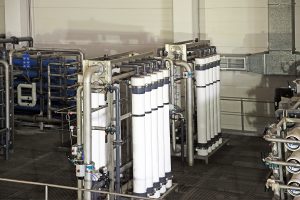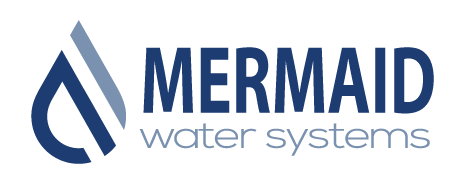Unlocking the Benefits of Reverse Osmosis: Clean Drinking Water for Your Home
 Clean drinking water is a basic necessity for a healthy life. However, not all households have access to clean drinking water. Tap water may seem safe, but it often contains impurities that can be harmful to your health. This is where reverse osmosis comes in – a process that removes contaminants from water, providing you with safe and clean drinking water. In this article, we will explore the benefits of reverse osmosis and how it can improve the quality of your home’s water. From its ability to remove harmful chemicals and bacteria to its cost-effectiveness and convenience, reverse osmosis is a game-changer in the world of clean water. So, let’s dive in and discover how you can unlock the benefits of reverse osmosis for your home.
Clean drinking water is a basic necessity for a healthy life. However, not all households have access to clean drinking water. Tap water may seem safe, but it often contains impurities that can be harmful to your health. This is where reverse osmosis comes in – a process that removes contaminants from water, providing you with safe and clean drinking water. In this article, we will explore the benefits of reverse osmosis and how it can improve the quality of your home’s water. From its ability to remove harmful chemicals and bacteria to its cost-effectiveness and convenience, reverse osmosis is a game-changer in the world of clean water. So, let’s dive in and discover how you can unlock the benefits of reverse osmosis for your home.
What is Reverse Osmosis?
Reverse osmosis, or RO, is a water treatment process that removes impurities from water by using a semipermeable membrane. This membrane allows water molecules to pass through while blocking larger molecules such as contaminants and impurities. The process of reverse osmosis has been used for many years to produce clean drinking water on a large scale, such as in desalination plants. However, in recent years, reverse osmosis systems have become increasingly popular for home use.
How Does Reverse Osmosis Work?
Reverse osmosis works by using pressure to force water through a semipermeable membrane. The membrane contains small pores that allow water molecules to pass through while blocking larger molecules such as contaminants and impurities. As the water passes through the membrane, it is separated into two streams – one containing purified water and the other containing the concentrated impurities. The purified water is collected and stored for use, while the concentrated impurities are flushed away.
Benefits of Reverse Osmosis for Drinking Water
There are many benefits to using reverse osmosis for drinking water. One of the main benefits is that it removes harmful chemicals and bacteria from the water. This includes impurities such as lead, arsenic, fluoride, and chlorine, which can cause health problems over time if consumed regularly. Reverse osmosis also removes viruses and bacteria, making the water safe to drink.
Another benefit of reverse osmosis is that it is cost-effective in the long run. While the initial investment may be higher than other filtration systems, such as carbon filters, reverse osmosis systems require less maintenance and have a longer lifespan. This means that you will save money on replacement filters and maintenance costs over time.
Reverse osmosis is also convenient and easy to use. Once the system is installed, all you need to do is turn on the tap, and clean water will flow out. There is no need to constantly refill a pitcher or wait for water to filter through a system.
Reverse Osmosis vs. Other Water Filtration Methods
There are several different water filtration methods available, each with its advantages and disadvantages. Carbon filters, for example, are a popular option for removing impurities from water. However, carbon filters are not as effective at removing contaminants as reverse osmosis systems. They also require more frequent filter replacements, which can be costly in the long run.
Another popular option is ultraviolet (UV) water purification, which uses UV light to kill bacteria and viruses in water. While UV purification is effective at killing bacteria and viruses, it does not remove impurities such as lead and arsenic. Reverse osmosis, on the other hand, removes impurities and bacteria, making it a more comprehensive solution for clean drinking water.
Factors to Consider When Choosing a Reverse Osmosis System
When choosing a reverse osmosis system for your home, there are several factors to consider. First, you will need to consider the size of the system. Reverse osmosis systems come in various sizes, and you will need to choose one that is appropriate for your household’s needs.
You will also need to consider the quality of the membrane. The membrane is the most critical component of the system, and higher quality membranes will last longer and remove more impurities.
The installation process is another important factor to consider. Some systems require professional installation, while others can be installed by the homeowner. You will need to choose a system that is appropriate for your level of DIY experience.
Finally, you will need to consider the cost of the system, including the initial investment and ongoing maintenance costs. While reverse osmosis systems may be more expensive than other filtration methods, they are cost-effective in the long run.
Installation and Maintenance of a Reverse Osmosis System
Reverse osmosis systems require minimal maintenance once they are installed. The most critical aspect of maintenance is replacing the filters regularly. Most systems require filter replacements every 6-12 months, depending on the quality of the membrane and the amount of water consumed.
The installation process can vary depending on the system you choose. Some systems require professional installation, while others can be installed by the homeowner. If you are unsure about the installation process, it is always best to consult a professional.
Reverse Osmosis and Sustainability
One concern that many people have about reverse osmosis is its impact on the environment. While reverse osmosis systems do require energy to operate, they are still more sustainable than other water treatment methods such as bottled water.
Bottled water production requires a significant amount of energy and resources, including plastic, transportation, and production. Reverse osmosis systems, on the other hand, only require energy to operate the system and do not produce any waste.
Frequently Asked Questions about Reverse Osmosis
Is reverse osmosis water safe to drink? Yes, reverse osmosis water is safe to drink and free from harmful impurities.
How often do I need to replace the filters? Most reverse osmosis systems require filter replacements every 6-12 months.
Can I install a reverse osmosis system myself? Some systems can be installed by the homeowner, while others require professional installation.
How much water does a reverse osmosis system waste? Reverse osmosis systems can waste up to 4 gallons of water for every gallon of purified water produced.
Reviews of Popular Reverse Osmosis Systems
APEC Water Systems ROES-50 Essence Series Top Tier 5-Stage Certified Ultra Safe Reverse Osmosis Drinking Water Filter System This system is highly rated for its ease of installation and high-quality filtration.
iSpring RCC7AK 6-Stage Superb Taste High Capacity Under Sink Reverse Osmosis Drinking Water Filter System This system is known for its effective filtration and affordable price.
Home Master TMAFC-ERP Artesian Full Contact Undersink Reverse Osmosis Water Filter System This system is popular for its comprehensive filtration and easy maintenance.
Conclusion
Reverse osmosis is an effective and cost-effective solution for providing clean drinking water in your home. It removes harmful chemicals and bacteria, making the water safe to drink. While the initial investment may be higher than other filtration methods, reverse osmosis systems require minimal maintenance and have a longer lifespan, making them cost-effective in the long run. When choosing a reverse osmosis system, consider factors such as size, quality of the membrane, installation process, and ongoing maintenance costs. With the right system in place, you can enjoy safe and clean drinking water in your home for years to come.
